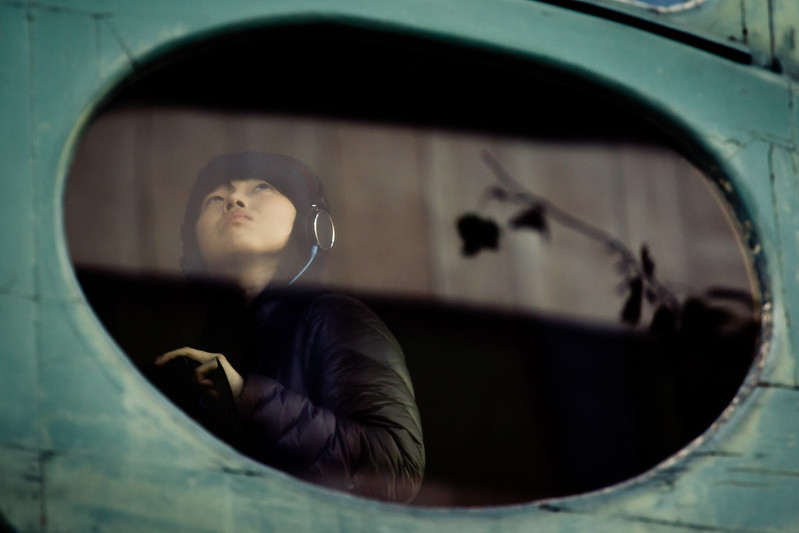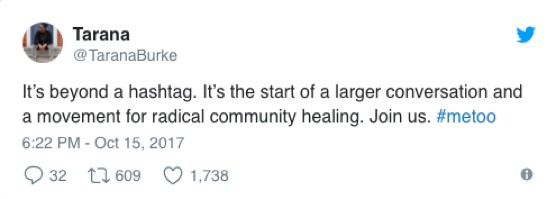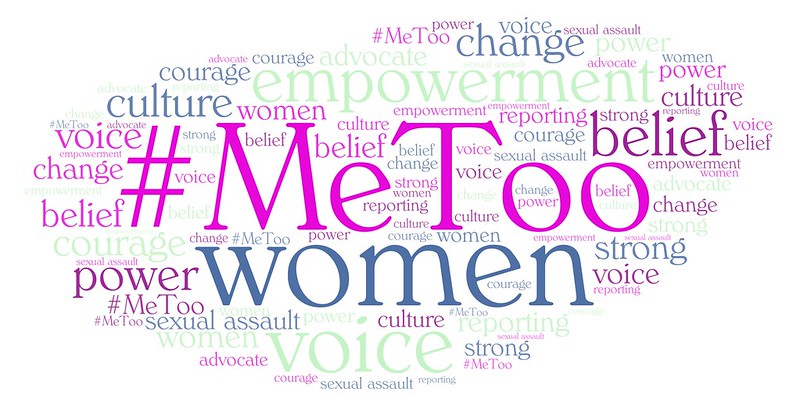Rhetoric After Sound: Stories of Encountering “The Hum” Phenomenon

..
“So I have heard The Hum… The rest of what I’m about to tell you is beyond reasoning, and understanding.” Here, in a Reddit post, Michael A. Sweeney prefaces their story of their first encounter with “the hum,” an unexplained phenomenon heard by only a small percentage of listeners around the world. The hum is an ominous sonic event that impacts communities from Australia to India, Scotland to the United States. And as Geoff Leventhall writes in “Low Frequency Noise: What We Know, What We Do Not Know, and What We Would Like to Know,” the hum causes “considerable problems” for people across the globe—such as nausea, headaches, fatigue, and muscle pain—as it continues to be an unsolved “acoustic mystery” (94).
..
Sweeney’s story of encountering the hum for the first time is remarkable. It begins in Taft, California, which Sweeney recounts as “a podunk little desert bowl town in the middle of nowhere. You can literally drive from one end to the other in under 10min, under 5 if you was speeding.” On this particular night, while walking down the main road of Taft, they report the scene being charged with electricity, and following this charge, hearing a moving sound, a traveling yet invisible sound. “This invisible thing was creating a noise like I had never heard before and sending a wave of static electricity throughout the air in every direction around it,” Sweeney explains. They try to track it down, but to no avail. After following the hum a few blocks and around a couple of corners, it just simply vanishes. As Kristin Gallerneaux aptly claims in her book High Static, Dead Lines: Sonic Spectres and the Object Hereafter, “the Hum’s oppression seems to come from everywhere and nowhere” (196), and this is especially true in Sweeney’s encounter.

While their account of the hum as electrically-charged is exceptional, Sweeney’s story adequately represents both the anomalistic qualities of the hum and its ability to elude a locatable and identifiable source. They attempt to describe the hum during this encounter as “like an invisible traveling vehicle of some sort,” but that, altogether, they are “not really sure” what it is. And they even admit that this explanation “makes no sense… whatsoever.” This difficulty in describing the phenomenon is reaffirmed not only by the stories told by other listeners but, too, the numerous scientific experiments that have been conducted after the hum’s frequent emergence beginning around the 1970s (Deming “The Hum: An Anomalous Sound Heard Around the World” 583).

In the US, two major studies have been conducted on the hum: The first in Taos, New Mexico, and the second in Kokomo, Indiana (Cowan “The Results of Hum Studies in the United States”; Mullins and Kelly “The Mystery of the Taos Hum”). Collectively, nearly three hundred residents in these communities have reported hearing a mysterious hum that exists without a known source. While it may sound like an idling diesel truck engine (Frosch “Manifestations of a Low-Frequency Sound of Unknown Origin Perceived Worldwide, Also known as ‘The Hum’ or the ‘Taos Hum’” 60), a dentist’s drill (Deming 575), “someone’s high-powered audio bass running amok” (Mullins and Kelly “The Elusive Hum in Taos, New Mexico”), or simply just an “invisible force”—as Sweeney claims—it may be none of the above. Musicologist Jorg Muhlhans asserts that “there is no clear evidence for either an acoustic or electromagnetic origin, nor is there an attribution to some form of tinnitus” (“Low Frequency and Infrasound: A Critical Review of the Myths, Misbeliefs and Their Relevance to Music Perception Research” 272). Thus, according to Muhlhans, these studies reveal that while hum’s sensorial impact is that of sound, the phenomenon itself is likely neither acoustic nor electromagnetic.

Beyond the limits of current scientific logics which attempt to make sense of sonic events and their impacts, the hum exists as an exceptional and unknown anomaly. It transcends the valuative limits of current knowledge in acoustics and ways of understanding how sound moves through, across, and within spaces to address potential listeners. “I’m not saying I saw waves of electricity or anything of the sort,” Sweeney adds to their above description of the hum as a sound “charged with electricity.” “It was more of a feeling than something you saw. I could just feel electricity everywhere, and see little tendrils of it from my fingertips as I ran them across each other… I just KNEW it was coming from whatever was making that sound, this invisible force that was traveling down the road.” In such an account, the hum defies scientific explanation, and this fact is supported by the multiple failed investigations into the phenomenon. As Franz Frosch details in their article “Hum and Otoacoustic Emissions May Arise Out of the Same Mechanisms,” some scientists have built multiple “custom shielded chamber[s]” out of copper and magnetic material to test for a potential acoustic or electromagnetic source of the hum (604). These investigations, time after time, can’t provide an answer—leaving it up to listeners of the hum to form their own.

Sweeney’s story—and the endless other stories of the hum that have been told across the world—depict the lived, affective, and rhetorical experience of anomalistic listening. To hear, to listen with the hum, is to experience the affective dimensions of a “sound” that has no apparent acoustic or electromagnetic source. This is because “sonic knowledge is framed through acoustics and experience” (84), as Mark Peter Wright notes in his book Listening After Nature: Field Recording, Ecology, and Critical Practice. So, to listen with the hum is to occupy a state of affection that is altogether unknown to not only science but the listener themself. Sweeney bluntly continues, writing about their experience of the hum, saying, “I only know exactly what I’ve told you today.” To know this sound, for this sound to exist as truth, this unfolds through stories found in the still-to-be-explained.

I consider “after sound” to characterize this felt condition for rhetorical action that is a result of listening beyond or after acoustic valuations. Instead of this being a moment void of sound, “after sound” defines a state of experience that is complicated by an attempt to control the valuative limits of what is and isn’t sonic. In this way, “after sound” only gestures toward the temporal to develop the different emergence of the sensorial. Because the hum affects in a manner similar to sound but without acoustic or electromagnetic origin, people who hear the hum make sense of this relentless experience through a condition that is after sound. Such a claim is represented in Sweeney’s admission that “[they] just have this weird feeling that this story needs to be told. That there’s more to The Hum than anyone has realized, and that maybe it needs to be further studied and looked into” (added emphasis). This felt, “weird feeling” is initiated after sound, and this is what I am considering as the call for rhetorical action. Such an affective, felt, and lived experience may only exist after the “logical” answers, failed scientific studies, and experiments lacking helpful results become determinative of sonic limits.

Further, “after sound” moves from Marie Thompson’s discussion of “source-oriented” noise (30) that she posits in her book Beyond Unwanted Sound: Noise, Affect, and Aesthetic Moralism. Speaking to the phenomenon of the hum, Thompson explains that an “unidentifiable noise is often amplified in perception, grasping the attention of the listener” (29). “After sound” is an hyper-attuned condition wherein the rhetorical actions of listeners are always attentive to what-may-(not)-be acoustics. It is their presence within utter sonic mystery that fuels the potential for persuasive response. And David Deming, a researcher in Geosciences, articulates in his article “The Hum: An Anomalous Sound Heard Around the World” that “in the absence of an answer provided by science, Hum hearers tend to find an explanation and hang on to it” (579), which illustrates the potential for listeners to respond via story within the conditions foregrounded by anomalistic encounters. “After sound” describes a moment of malleability that opens up in soundtime for different negotiations of sense and affect.

Responding to the conditions of listening with story, like Sweeney does, reflects an intention to share and persuade through an expression of sonic experience. As Katherine McKittrick states in her book Dear Science and Other Stories, “story opens the door to curiosity; the reams of evidence dissipate as we tell the world differently, with creative precision” (7). And V. Jo Hsu, speaking to the rhetorical potential of story, elucidates in their book Constellating Home: Trans and Queer Asian American Rhetorics that “story can slow down, hold still, redefine, and/or reimagine our physical movements to renegotiate their shared meanings” (18). How I’m conceiving of storytelling after sound develops from the insights developed by these authors and other scholars exploring the rhetorical potential of story in cultural rhetorics.

Story, in the domain of sound, enables listeners to reconsider how, when, why, and where the sonic is defined and valued. While it must not be the sole rhetorical technology after sound, Sweeney clearly relies on storytelling to make sense of their encounter with the hum. This story and other stories told about the hum illustrate how listeners practice the negotiation of sound’s meaning by collectively exploring ways of investigating and experimenting with(in) phenomena. Telling stories after sound is to reach across and through a community of listeners to find shared truths that come to be through encounters with hearing. Altogether, rhetoric after sound queries the intersection of perception and intelligibility to jostle forward the meaning of listening. At a moment when the world is at a loss for answers, this is a practice of seizing opportunities for hopeful and imaginative intervention into the valuative limits of the sonic.

“I’ll end it here,” Sweeney begins in their last paragraph, “and I can assure you that everything I have told you is the absolute truth. It happened to me and not a friend of a friend. I was awake, I’m not making any of it up, and all I want are REAL answers.” Sweeney’s call for a resolution was posted 10 months ago, in May 2023. And still today, the hum continues to lack answers, and the unsolved mystery continues to impact listeners. More recently, Popular Mechanics reported in a November 2023 article, titled “A Ghostly Nighttime Hum Is Invading Random Towns. Scientists Don’t Know What It Means,” that the hum has reached Omagh in Northern Ireland and that citizens are “trapped inside [of a mystery].” So far, no matter the amount of media coverage nor number of affected people across the world, encounters are ultimately defined by sounds unknown. After sound—when communities of listeners are left behind by these valuative limits—rhetorical action persists in search of an explanation.
—
Featured Image: Spiral by Flickr User Richard CC BY-NC 2.0 DEED
—
Trent Wintermeier is a second-year PhD student in the Department of Rhetoric and Writing at the University of Texas at Austin. He’s a Graduate Research Assistant for the AVAnnotate project, where he helps make audiovisual material more discoverable and accessible. Next year, he will be an Assistant Director for the Digital Writing & Research Lab. His research interests broadly include sound, digital rhetorics, and community. Currently, he’s interested in how researchers can responsibly engage with communities impacted by sound and the local rhetorical ecologies which materialize under sonic conditions.
—

REWIND!…If you liked this post, you may also dig:
Becoming a Bad Listener: Labyrinthitis, Vertigo, and “Passing”–Aaron Trammell
Live Through This: Sonic Affect, Queerness, and the Trembling Body–Airek Beauchamp
Listening to Tinnitus: Roles of Media When Hearing Breaks Down—Mack Hagood
My Time in the Bush of Drones: or, 24 Hours at Basilica Hudson–Robert Cashin Ryan
Echoes of the Latent Present: Listening to Lags, Delays, and Other Temporal Disjunctions–Matthew Tompkinson
Re-orienting Sound Studies’ Aural Fixation: Christine Sun Kim’s “Subjective Loudness”–Sarah Mayberry Scott


























Recent Comments